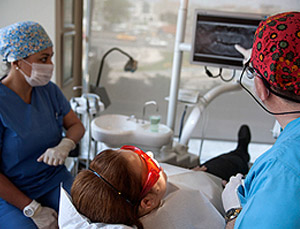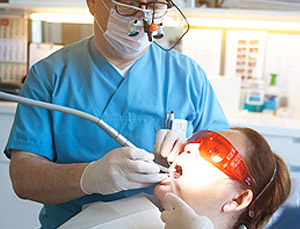Endodonti is the main branch of Science, especially where root canal treatments are...

Endodonti is the main branch of Science, especially where root canal treatments are performed. Today, root canal treatment is performed in one session in live teeth, and in two sessions usually in lost teeth.
About Dental Anatomy
The part of the tooth that appears in the mouth is called the crown, which does not appear in the mouth, and the part that remains in the bone is called the root. Our teeth are made up of several layers. The outer part of the crown, that is, the part seen in our mouth, takes the name of mine. The root portion of the tooth that is under the gum and encircled with bone covers the cementum layer. There is also the dentine layer under the enamel and cement layers. Dentin is the largest layer of tooth and unlike the enamel layer, it contains nerve endings. With this feature, it plays a role in the pain mechanism.
There is a tooth pulp under the dentine layer. This section of the tooth veins and nerves are located. Pulp plays an important role in the development and continuation of the tooth. In addition, after brushing our teeth with the pain mechanism transmits the problems encountered by our teeth.
How Does Pulpal Get Inflamed?
There are bacteria in every human mouth cavity. Bacteria combine with many foods that we eat to make acids in our mouths. If we do not remove these formed acids from our mouths, these substances damage the enamel and cause decay in the enamel layer. If enamel rot is not treated, they go to dentin layer under the enamel layer. The dentine layer warns us through pain, but if the decay is not treated again, microorganisms move towards the pulp this time. In the meantime, pulpa activates various ways to protect itself. One of these ways is to warn us through pain, but again, if we do not treat our teeth after a period of time microorganisms in the pulp by destroying the veins and nerves to create inflammation causes.
The pulp is also another way of forming the inflammation is traumas. A blow to the tooth can cause the veins and nerves entering the root of the tooth from the end of the tooth to break, thereby losing the vitality of the tooth. This condition is caused by the addition of microorganisms in any way in the pulp inflammation. Tooth decay is a disease in which acids build up on the surface of the tooth.
How Can A Tooth Be Infected?
A cold and hot food can signal the onset of an inflammation of the tooth pain and the sensitivity of the tooth that is felt during consumption. These symptoms of inflammation may include excessive discoloration of the teeth. In addition to these, the tooth decay reaches to pulp, but not treated, the infection is removed from the root end of the jaw bone and can cause small, large bottles. In this case, the fight against infection, in addition to the actions of the dentist can also be applied to the use of antibiotics. The general blood, swelling of the tooth in the percentage should be pulled after the swelling, but this is a very old idea. It is important to remember that the root canal treatment is the most effective way to prevent tooth decay.
 What Are The Stages Of Root Canal Treatment?
What Are The Stages Of Root Canal Treatment?
1. Determination of problematic tooth by radiography.
2. If the tooth is alive, local anesthesia will be done to eliminate the sensitivity of the tooth and surrounding tissues.
3. Formation of cavities on the enamel and dentine layers of the tooth by cleaning, to reach the pulp.
4. Using electronic tools to determine the length of work and confirm by radiography.
5. Removal and removal of infected dentine layers and microorganisms in the root canal using rotary instrument systems.
6. When using rotary instrument systems in root canals, elimination of microorganisms with various root canal disinfectants.
7. A root canal is a procedure in which the pulp of the tooth is removed and replaced with a filling.
After root canal treatment, the tooth's relationship with neighboring tissues is cut, the infection does not occur again and if there is damage to the surrounding tissues of the tooth is intended to be repaired.
The success rate for root canal treatment is 90%.